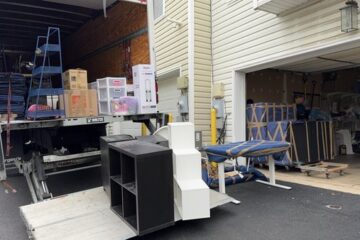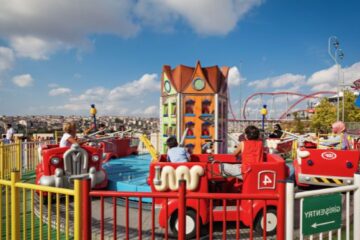Tips For Choosing The Right Discontinuous Fence Panels

Discontinuous fence panels, also known as movable fence panels, offer a unique alternative to permanent fencing solutions. By creating modular sections that connect together, discontinuous panels allow for reconfiguration as needed. However, not all panel systems are equal when it comes to quality, ease of use, and versatility. This article outlines key criteria to consider when selecting the right discontinuous fence panels for your unique application.
- Assess the site layout.
Take measurements and map out exactly where fencing needs to go, noting all access points. Discontinuous panels are ideal for organically-shaped sites that would prove tricky for permanent installations. Panels can contour along property lines, work around existing structures and landmarks, and connect separate zones. Accurately assessing the layout ensures you order the right quantity of customized panels.
- Determine the needed height and privacy level.
Consider whether fencing is purely decorative or must provide definitive boundaries, security, and privacy. The needed height and opacity of panels depend on their function. For crowd control events, 3-4’ offers adequate separation without obstructing views. Backyard privacy requires taller (6–8′) solid panels. Ensure the system offers appropriate panel sizing and infill material options to achieve your ideal function and aesthetics.
- Calculate wind load capacity.
Factor in local wind conditions and building codes to determine the required wind load capacity for discontinuous panels. Lightweight systems are prone to blowing over present safety hazards. Look for robust interlocking posts, weighted bases, tensioning cables, and durable panel anchoring that withstands strong gusts. Wind load ratings give confidence in a system’s stability for exposed outdoor installations. Don’t overlook this key detail.
- Choose quality construction materials.
Discontinuous fence panels must be rugged enough to hold up through repeated reconfigurations and long-term outdoor exposure. Look for commercial-grade aluminum or steel posts and frames paired with durable polyethylene or polycarbonate infill sheets. Avoid cheap, flimsy materials that easily bend, warp, crack, or discolor. Pay attention to hardware quality as well. All components should feel sturdy and be built to last.
- Prioritize Quick, Simple Installation
The beauty of discontinuous panels lies in their modular, DIY-friendly design. Sections should require no tools aside from the provided clips, clamps, or pins. Weighing panels down for added stability should utilize built-in foot plates or sandbags, not jury-rigged solutions. Quality systems assemble intuitively in under 5 minutes per section. Overly complex or unwieldy designs defeat the purpose of movable fencing.
- Evaluate mobility and portability.
Look at product images and videos to assess how easily panels move. Quality wheels, casters, lifting handles, and balanced weighting prevent tipping accidents during repositioning. Individual sections should be manageable for 1-2 people to roll, pivot, fold down, or detach as needed. True portability allows for breakdown into vehicles for offsite use. Test mobility before purchasing to ensure the system glides smoothly.
- Choose matching accessories.
Don’t overlook handy accessories like entry gates, curved panels, drop-down pass-through windows, storage carts, and corner connectors. These extras enhance stand-alone panels with access points, space savings, and aesthetic cohesion. Matching accessories should feature the same durable builds and effortless connections as fence sections. A unified system looks intentional rather than disjointed.
- Seek out custom branding options.
Many discontinuous fence systems allow for digital print graphics, custom colors, and powder coating. Branding panels make them a stylish extension of your event, company, or decor. Consider covering sections in sponsor advertisements to help offset material costs. Numbered panels also aid in reassembly. Built-in branding opportunities add professionalism and personality.
- Compare warranties and support
Quality discontinuous fencing offers strong multi-year warranties on materials, construction, and hardware. Helpful vendors provide design consultation, layout recommendations, and live technical support as well. Clear instructions should explain proper usage, care, and maintenance. Durable systems backed by responsive customer service demonstrate long-term reliability.
- Review ratings and client feedback
Do online research to see real customer reviews and testimonials. This provides transparent insight into others’ user experiences beyond marketing claims. Look for brands with overwhelmingly positive feedback on factors like durability, ease of use, aesthetics, and customer service. Happy clients indicate panels that meet expectations out in the real world.
- Evaluate multi-site usability.
Ideally, discontinuous panels serve your needs across various locations and events over the long term. Look for versatile sizing, opacity, and branding options that adapt to different applications over time. Weather-resistant construction withstands outdoor conditions at changing venues. Foldable, wheeled models offer the ultimate portability between sites. Extended use across multiple events delivers a significant return on investment.
- Know Your Budget
Discontinuous fencing ranges widely in pricing, starting around $100 per 4’x7’ panel, so set realistic expectations. Consider pooling resources for large events or spacing out purchases over time. Look for quality materials suited for intensive commercial use over cheaper versions. With some creativity, modular fencing can work within most budgets. Discuss needs with vendors to find cost-effective solutions.
- Consider sound reduction.
Look for discontinuous fence panels incorporating sound-dampening materials if reducing noise pollution is a priority. Multi-layered panels with noise-blocking insulation minimize the transmission of loud music, machinery, tools, crowds, or other disruptive sounds. Sound reduction maintains better community relations and protects hearing.
- Evaluate visual light transmission.
Transparent or mesh infill panels shouldn’t create overly obstructed views. Look for materials offering at least 60–70% visual light transmission for see-through visibility. Diffusive rather than tinted plastic or mesh prevents tunnel vision effects indoors. Test visibility at eye level through panels during demos to ensure appropriate light transmission.
- Repurpose and recycle
Seek out discontinuous fence materials conducive to reuse, resale, and recycling once panels reach the end of their lifecycle. Easy disassembly allows the salvaging of posts, frames, connectors, and graphics for next-life use. Plastic components like polycarbonate infill also recycle efficiently. A reuse/recycle plan prevents wasteful panel disposal.
Conclusion
Choosing the ideal discontinuous fence panels means balancing durability, security, ease of use, aesthetics, customization, and mobility to suit each unique application. Keeping key criteria like installation simplicity, branding potential, and multi-site versatility in mind allows buyers to select systems that flexibly meet changing needs over time. Investing in high-quality materials, smart accessories, and responsive customer support ensures optimal long-term performance across events, sites, and seasons. With proper planning and evaluation, discontinuous panels create adaptable, professional boundaries perfect for evolving spaces.
Leave a reply
You must be logged in to post a comment.











